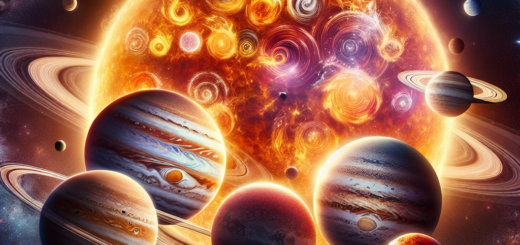Galactic Supermassive Black Holes: The Central Engines of Galaxies
Galactic supermassive black holes are some of the most mysterious and powerful objects in the universe. Located at the centers of most galaxies, including our own Milky Way, these massive black holes play a crucial role in shaping the evolution of their host galaxies.
Black holes are regions of space where gravity is so strong that nothing, not even light, can escape their grasp. Supermassive black holes, as their name suggests, are incredibly large and can have masses millions or even billions of times that of our sun. The exact origins of these massive black holes are still a topic of debate among scientists, but it is believed that they formed early in the history of the universe through the collapse of massive gas clouds or the mergers of smaller black holes.
One of the key roles of supermassive black holes is as the central engines of galaxies. As matter falls into the black hole, it forms a swirling disk known as an accretion disk. The gravitational energy released as the matter spirals inward heats up the disk, causing it to emit intense radiation across the electromagnetic spectrum, from X-rays to radio waves. This powerful radiation can outshine the combined light of all the stars in the galaxy, earning these black holes the title of “quasars” when they are particularly bright.
The energy released by supermassive black holes can have a profound impact on their host galaxies. The intense radiation and powerful jets of particles ejected from the black hole can heat up and ionize the gas in the galaxy, regulating the rate of star formation. In some cases, these jets can even blow away gas and dust, preventing new stars from forming and effectively shutting down the growth of the galaxy.
Despite their immense power, supermassive black holes are still shrouded in mystery. Scientists are still trying to understand how these black holes grow and evolve over time, as well as how they interact with their host galaxies. One of the key questions is how supermassive black holes are able to reach such enormous sizes in the first place, as current models of black hole growth struggle to explain how they could have grown so quickly in the early universe.
Studying supermassive black holes is a challenging task, as they are by nature invisible and can only be detected through their effects on the surrounding gas and stars. However, advances in technology, such as the development of powerful telescopes and instruments capable of detecting gravitational waves, are helping scientists to unravel the mysteries of these enigmatic objects.
In conclusion, galactic supermassive black holes are the central engines of galaxies, playing a crucial role in shaping the evolution of the universe. As we continue to study these mysterious objects, we may uncover new insights into the nature of black holes and the forces that govern the cosmos.













